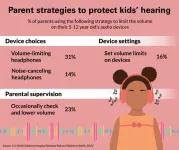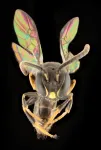Deforestation, a critical consequence of human activity, has garnered significant attention due to its impact on environmental sustainability, biodiversity and climate change. However, an equally pressing yet less explored aspect is the relationship between deforestation and human health, especially in impoverished regions. Scientists have increasingly recognized the detrimental effects of deforestation on various aspects of human health, particularly among children. Studies reveal that children residing in areas with high deforestation rates are at an elevated risk of malaria, respiratory illnesses, diarrheal diseases, and malnutrition. This is particularly alarming given that these regions are often home to the most economically disadvantaged populations, worsening existing health disparities.
Despite the growing body of research on the impact of deforestation on child health, there remains a critical gap in understanding how prenatal exposure to deforestation influences early childhood health outcomes. Cambodia serves as an ideal setting to explore this relationship, given its rapid deforestation rates coupled with prevalent child malnutrition and stunting. Over the past few decades, Cambodia has witnessed a drastic loss of forest cover, totaling millions of hectares. Concurrently, child stunting and underweight prevalence rates remain alarmingly high, underscoring the urgent need to examine the interplay between deforestation and child health in this context.
A new study by Associate Professor Gabriel Fuentes Cordoba from Sophia University, made available online on December 18, 2023, and published in Volume 52 of the journal Economics and Human Biology, sheds light on this issue, utilizing data from the Cambodian Demographic Health Surveys and combining it with precise forest loss data.
“I find that more persisting outcomes like height and weight are negatively associated with deforestation in critical periods in Cambodia. Also, when exploring the mechanisms, this study shows that the health of a vulnerable population, pregnant individuals, is negatively affected a year after deforestation occurs,” explains Dr. Fuentes Cordoba.
By running multiple regression specifications, Dr. Fuentes Cordoba examines critical periods of exposure of deforestation before and after birth, focusing on children under the age of five. Key health indicators, including birth weight, height-for-age z-scores, and weight-for-age z-scores, are examined to assess the impact of deforestation on child nutrition and growth.
The findings highlight significant associations between deforestation and child health outcomes. Children born in areas with high levels of deforestation in the year before their conception exhibited poorer health outcomes. Also, they were more likely to be shorter for their age, thinner for their height, and had lower birth weights.
Furthermore, the study uncovers a concerning link between prenatal deforestation exposure and maternal health. Pregnant females residing in regions with heightened deforestation rates the year before their pregnancy were more likely to experience anemia, serving as a proxy for malaria infection. This suggests that placental malaria may play a significant role in magnifying child health issues related to deforestation.
“The findings of this study reiterate the need to consider the impact of activities such as deforestation on the most vulnerable populations, especially among children and pregnant females,” says Dr. Fuentes Cordoba. The study advocates for targeted interventions to mitigate malaria infections among pregnant females in deforestation-prone areas, such as scaling up bed net distribution and promoting indoor residual spraying.
“This research shows a negative impact of deforestation on child health. This negative impact may persist into adulthood and affect other aspects of wellbeing such as education acquisition and even wages. My findings indicate that future research should explore this aspect further,” concludes Dr. Fuentes Cordoba.
Reference
Title of original paper
Deforestation and child health in Cambodia
Journal
Economics and Human Biology
DOI
https://doi.org/10.1016/j.ehb.20k23.101343
Authors
Gabriel Fuentes Cordoba1
Affiliations
1Faculty of Liberal Arts, Sophia University
About Sophia University
Established as a private Jesuit affiliated university in 1913, Sophia University is one of the most prestigious universities located in the heart of Tokyo, Japan. Imparting education through 29 departments in 9 faculties and 25 majors in 10 graduate schools, Sophia hosts more than 13,000 students from around the world.
Conceived with the spirit of “For Others, With Others,” Sophia University truly values internationality and neighborliness, and believes in education and research that go beyond national, linguistic, and academic boundaries. Sophia emphasizes on the need for multidisciplinary and fusion research to find solutions for the most pressing global issues like climate change, poverty, conflict, and violence. Over the course of the last century, Sophia has made dedicated efforts to hone future-ready graduates who can contribute their talents and learnings for the benefit of others, and pave the way for a sustainable future while “Bringing the World Together.”
Website: https://www.sophia.ac.jp/eng/
About Professor Gabriel Fuentes Cordoba from Sophia University
Professor Gabriel Fuentes Cordoba is an Associate Professor of Economics at Sophia University, Japan. He completed his doctoral studies from Tohoku University before embarking on his career as an academician and researcher. In the Faculty of Liberal Arts, he teaches development economics, economics of poverty, and introductory microeconomics. He specializes in Development Economics and Applied Microeconomics. His current research interests include: the effects of civil conflict on the formation of political beliefs; empirical studies to understand the reasons why indigenous minorities tend to be the poorest individuals of Latin America; and the determinants of household credit.
Funding information
This work was financially supported by Japan Society for the Promotion of Science (JSPS) KAKENHI Grant Number 22K13396.
END




